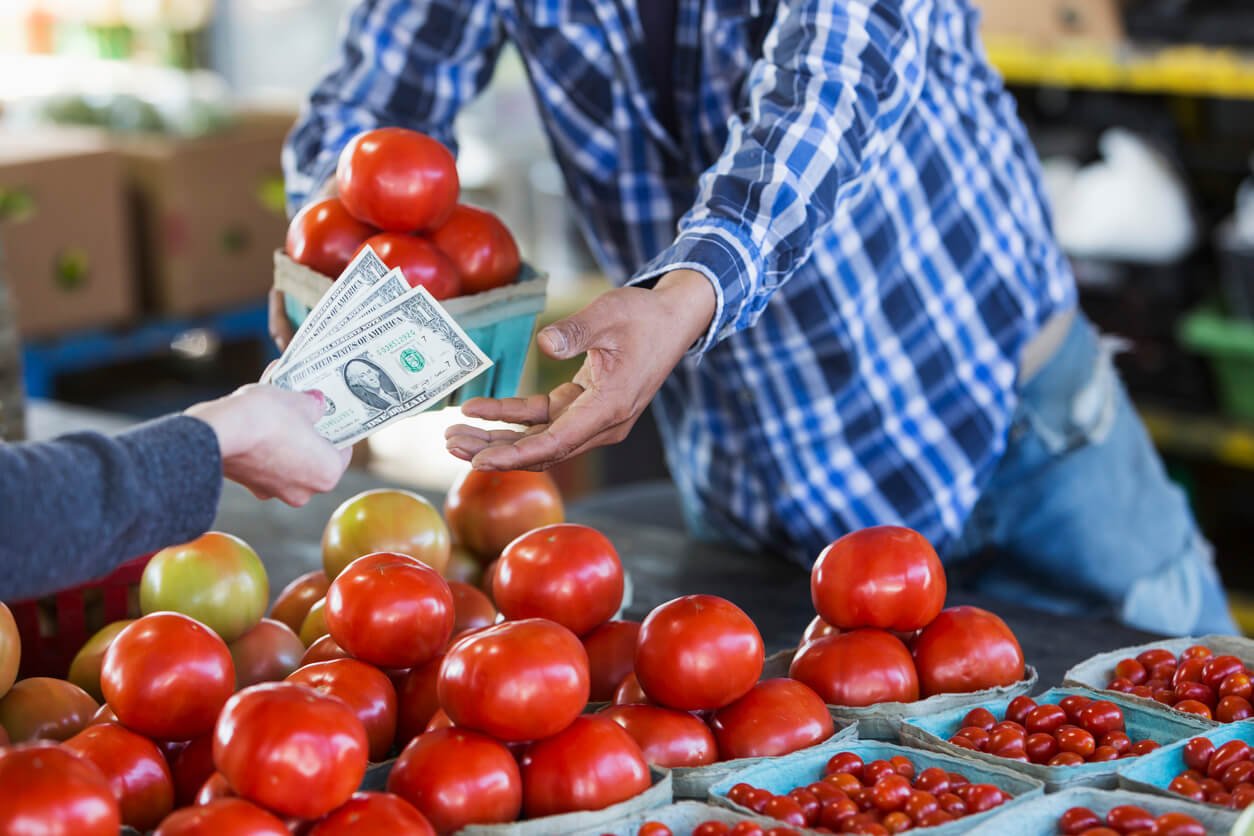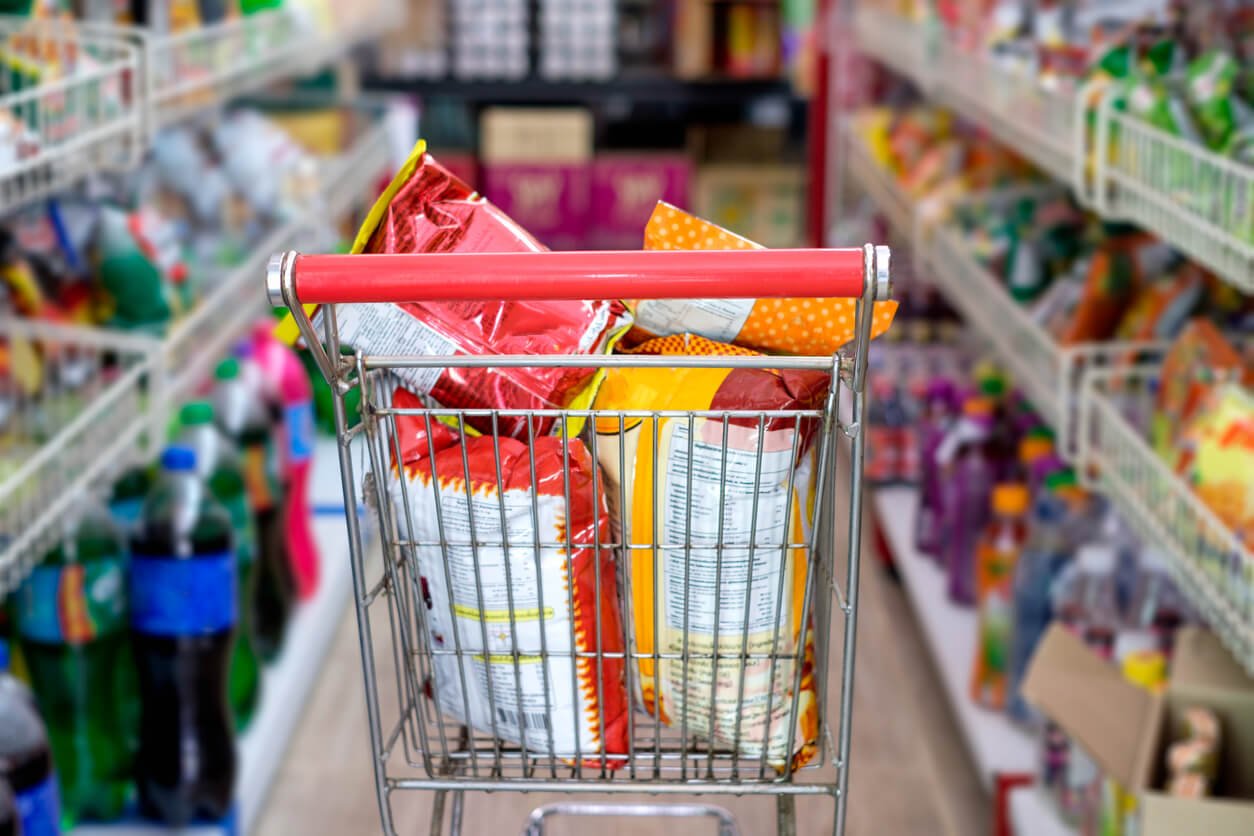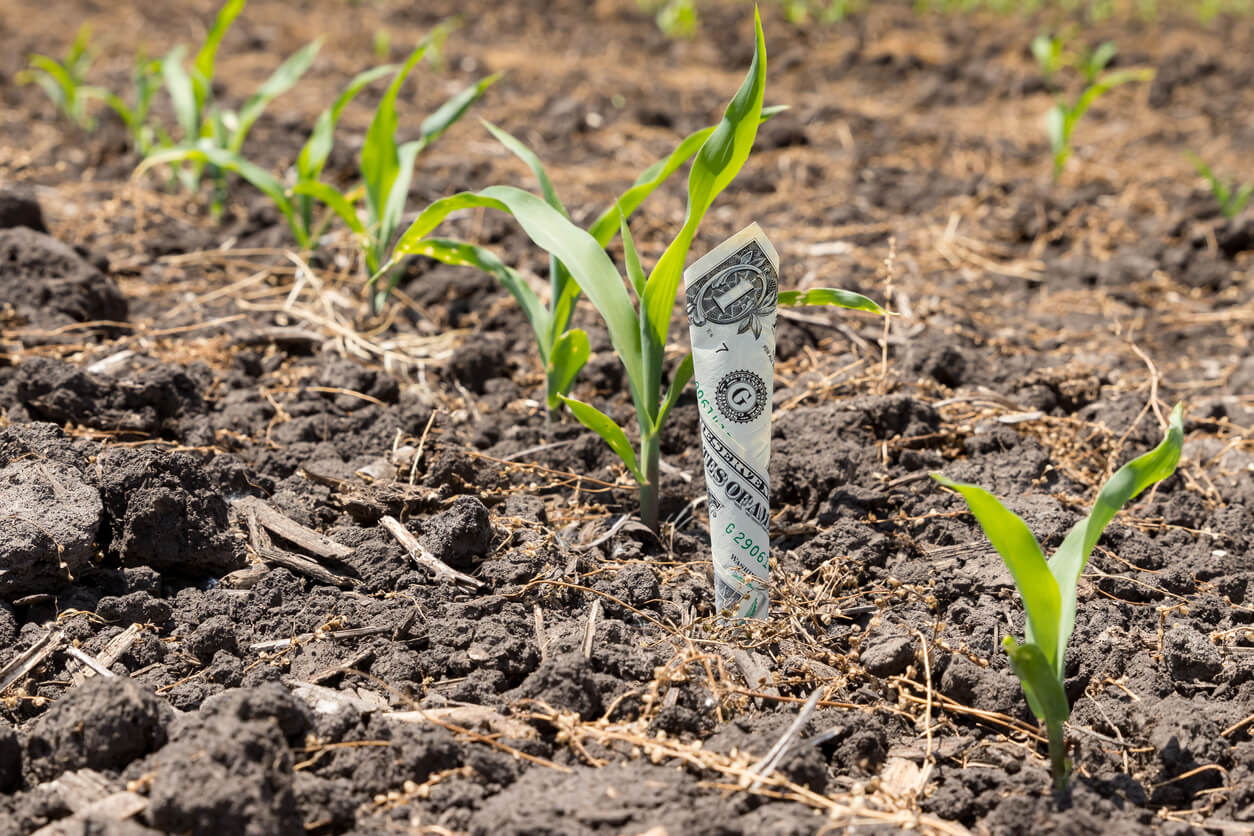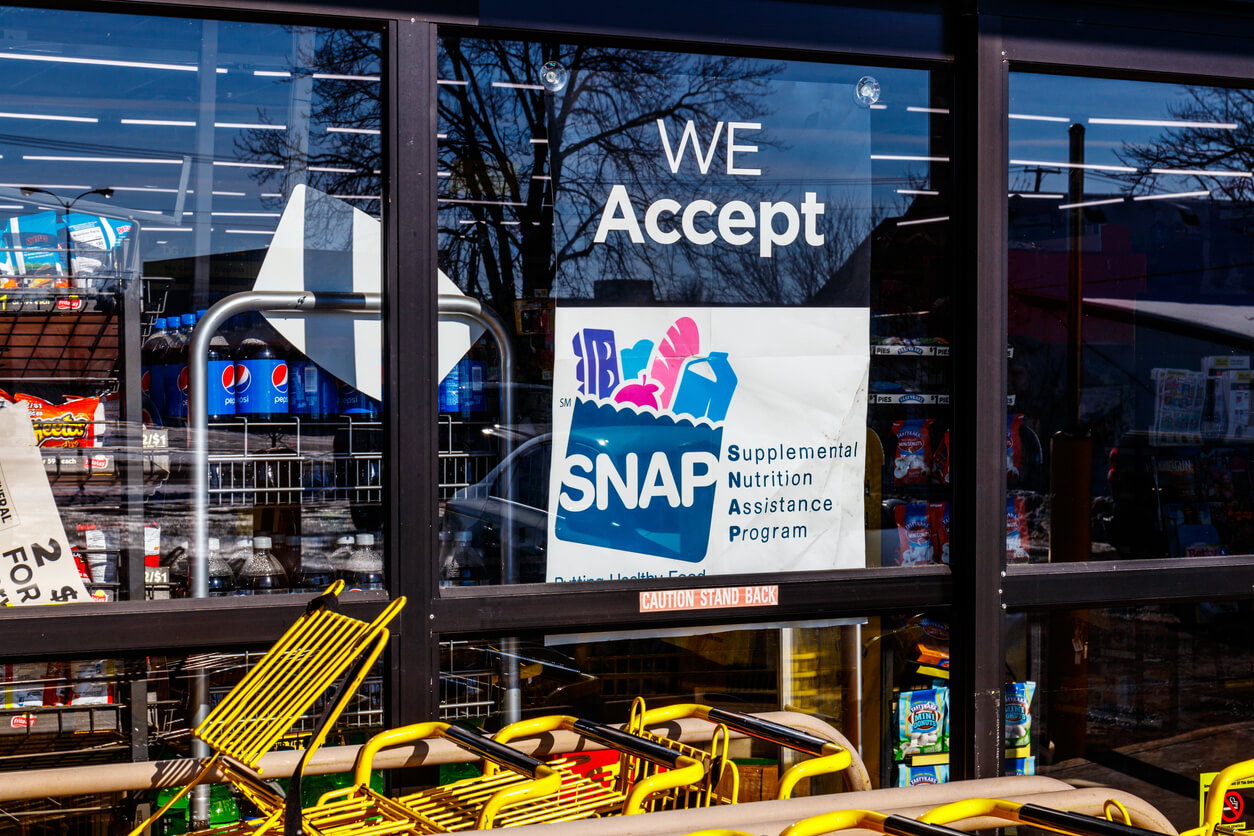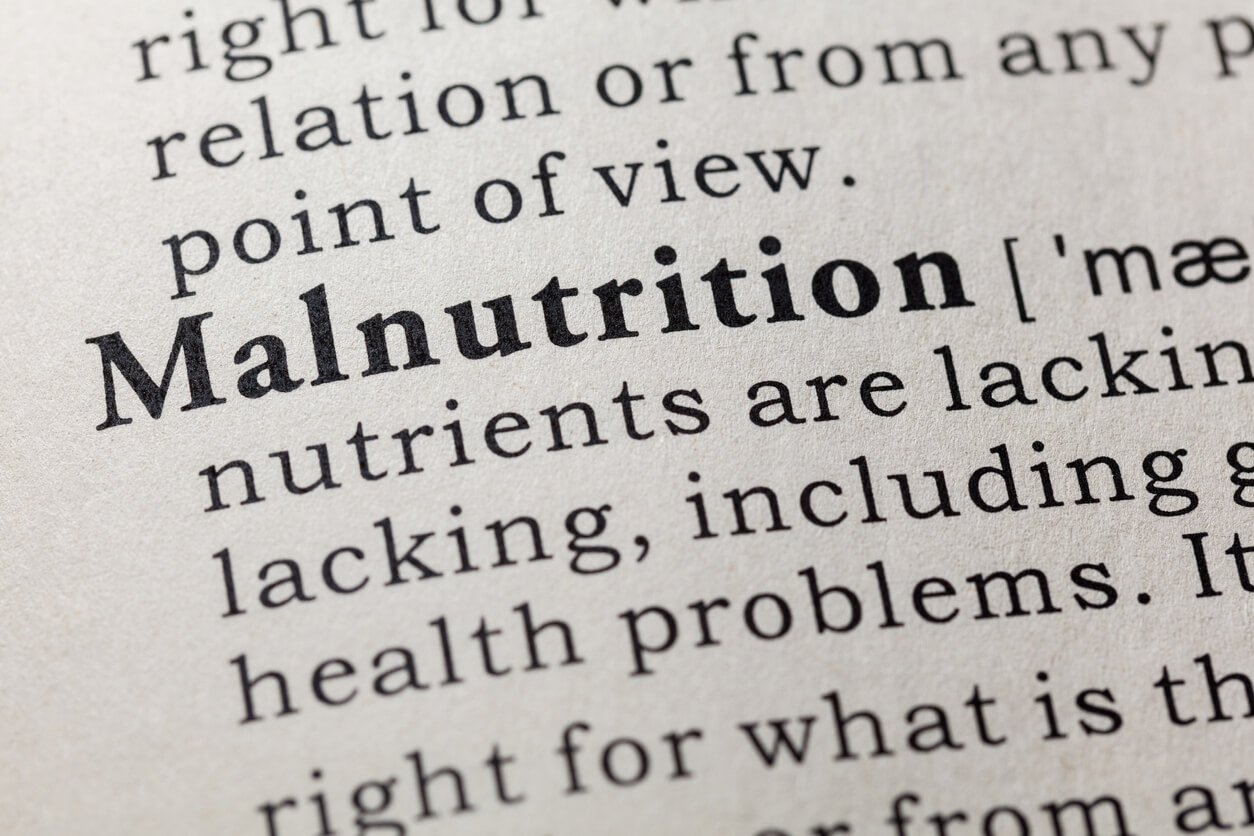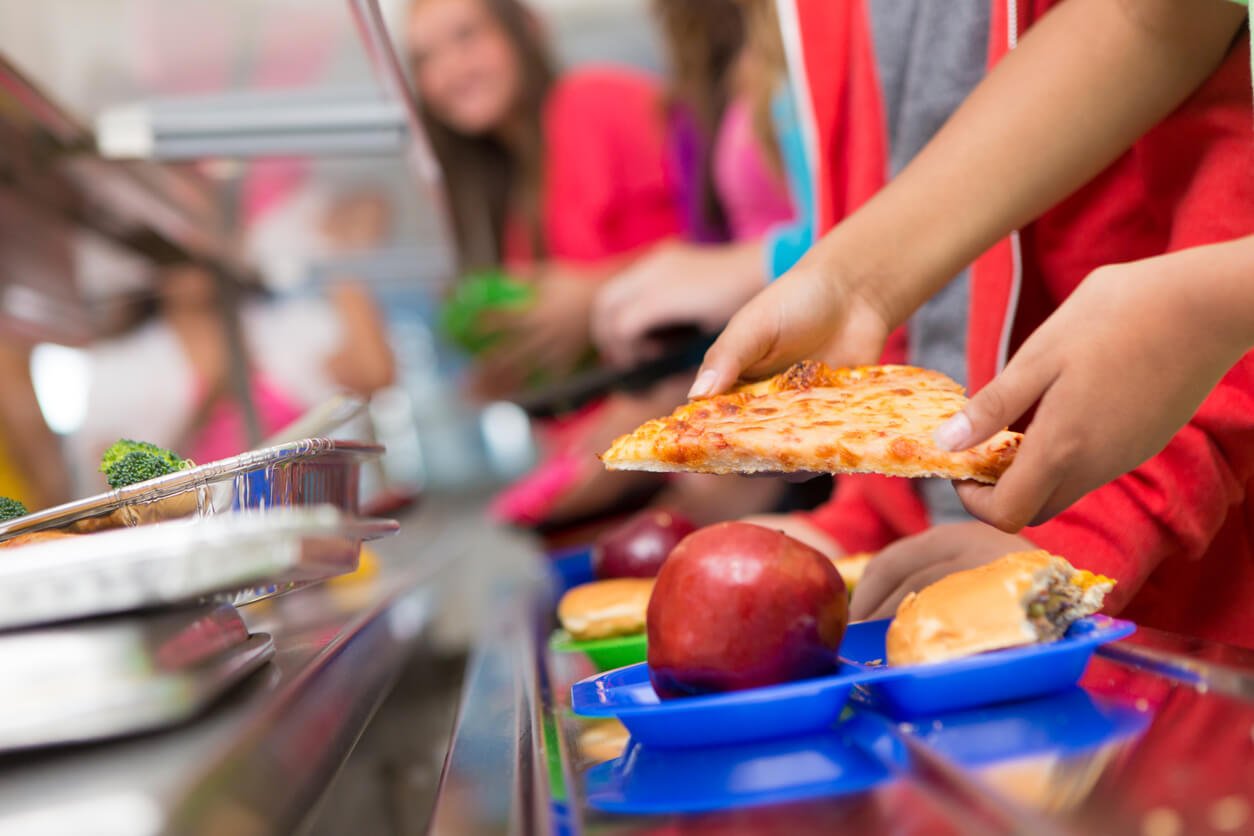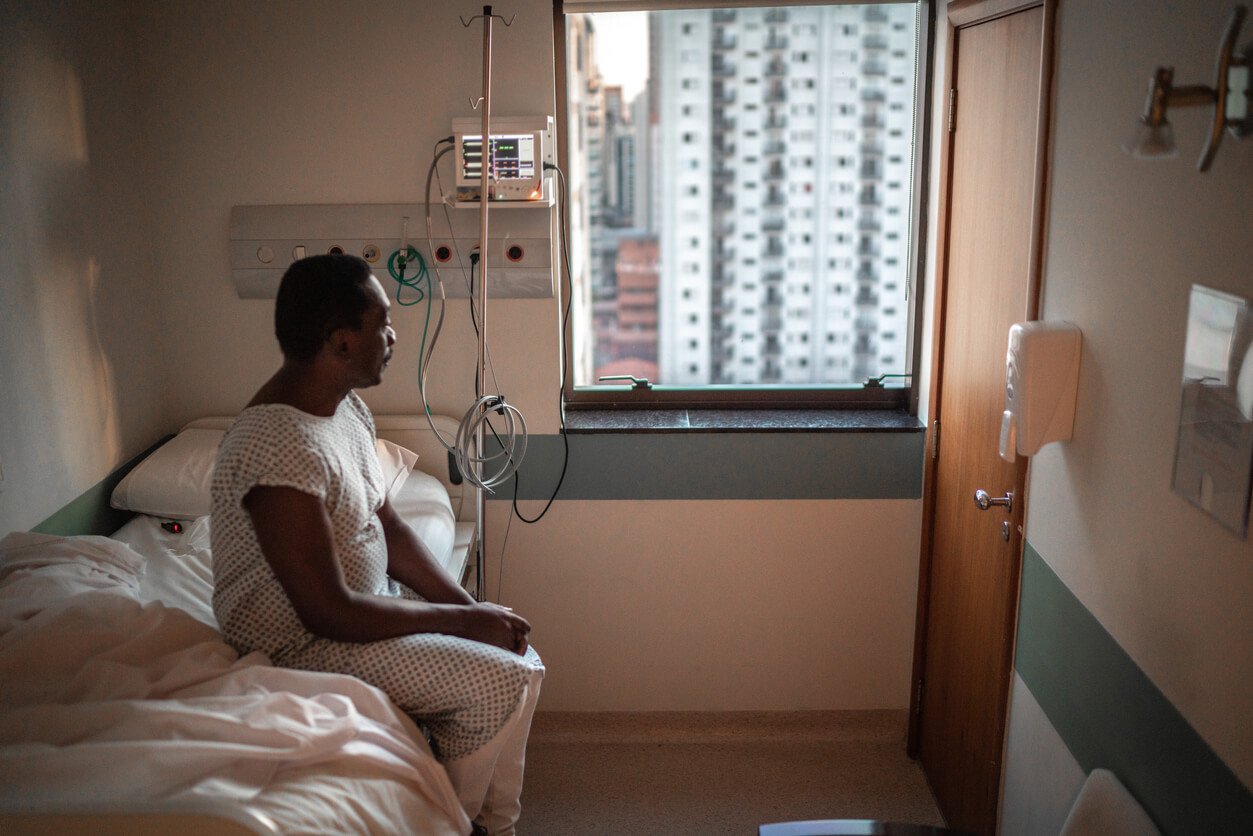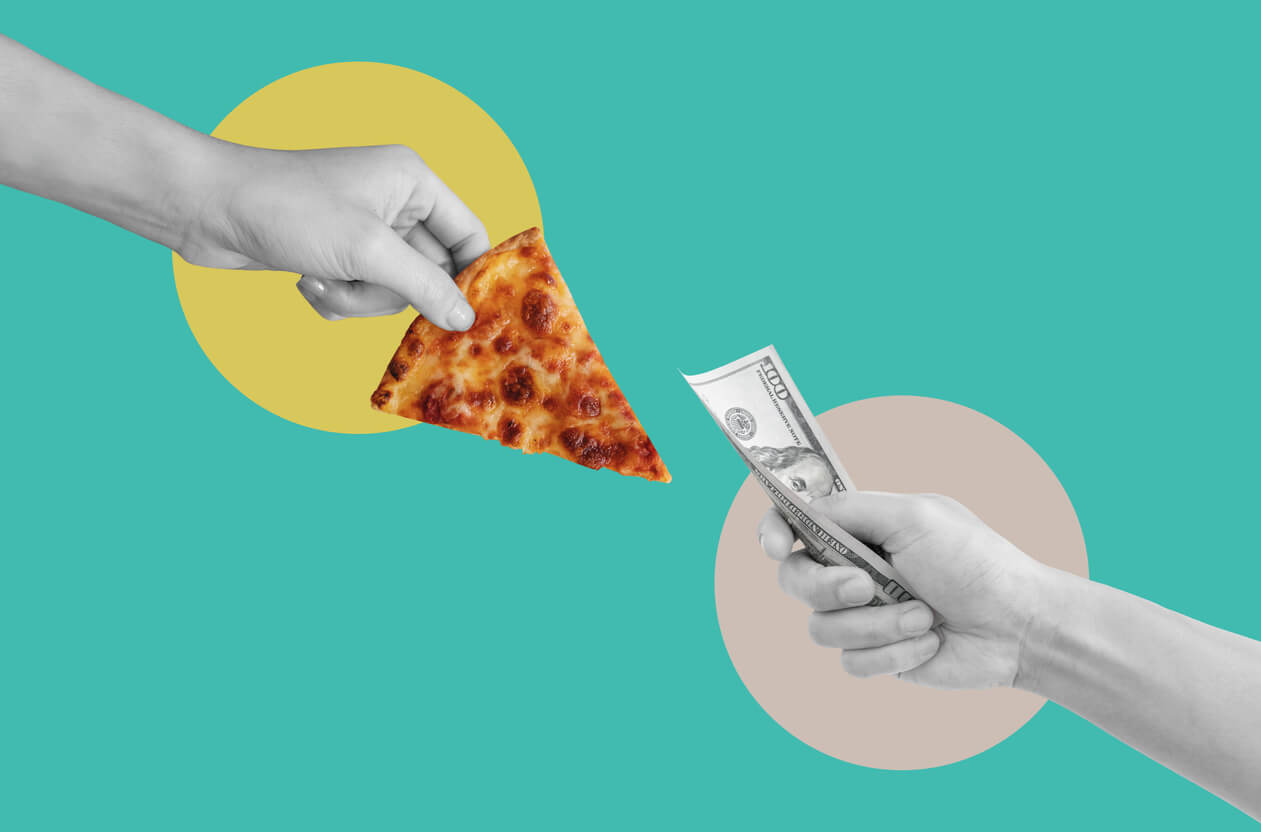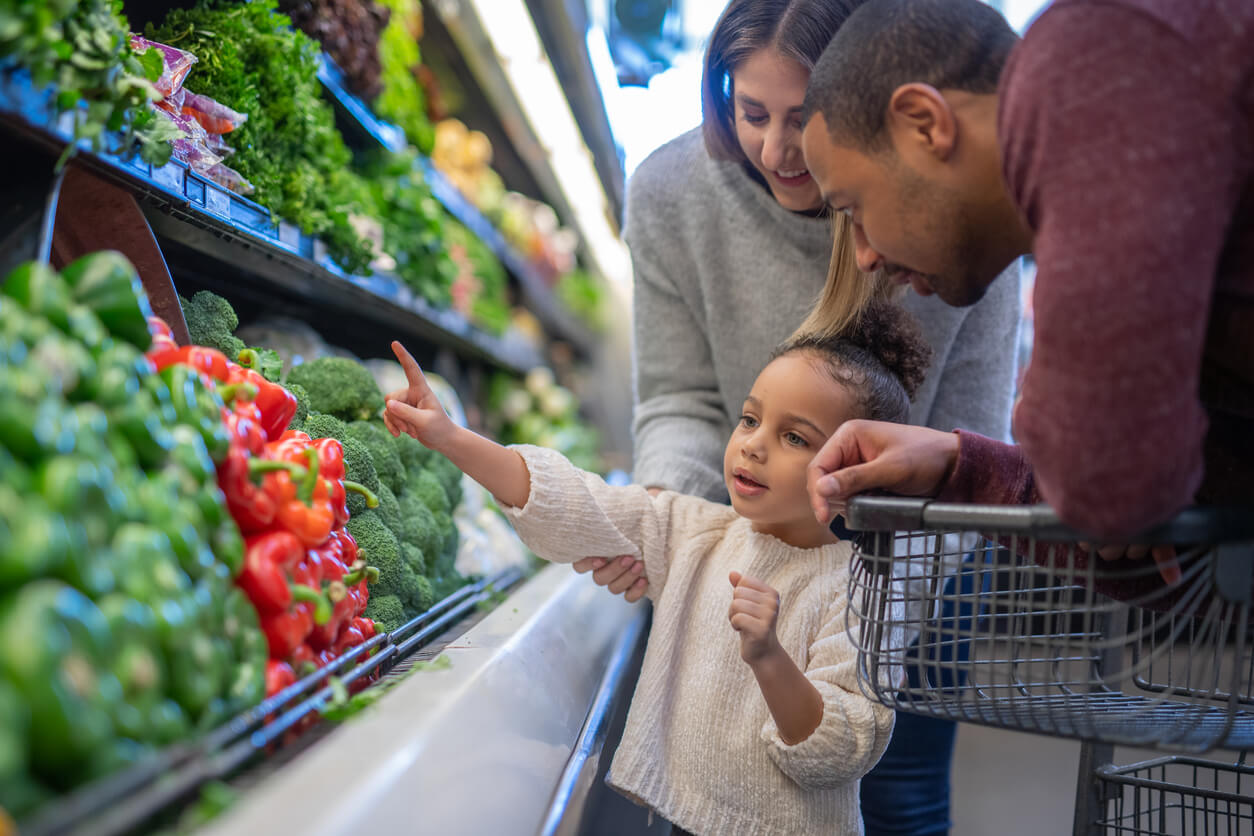We all need food to live. At Food Revolution Network, we are dedicated to healthy, ethical and sustainable food for all.
But unfortunately, that isn’t the world we live in right now.
Not everyone has access to a grocery store to buy what they need to support their health. Not everyone has the knowledge, time, or energy to prepare healthy food. And not everyone has the money to afford healthy food.
And just as poverty and income insecurity can lead to poor nutrition, the same dynamic exists in reverse. Poor nutrition undermines health, and then poor health can also contribute to poverty. Poor nutrition not only leads to chronic disease and emotional distress. It also robs people of opportunities to move out of poverty and improve the prospects of future generations.
In this article, I’ll look at how social factors influence access to nutrition, how poor nutrition can keep people stuck in a cycle of poverty and disease, and what we can do about it.
Access to Food for All
Let’s try a thought experiment: imagine that oxygen wasn’t freely available in the atmosphere. That someone had figured out a way to extract it from the air, put it in canisters, and sell it.
And in order to breathe and stay alive, we had to pay to refill our canisters before they ran out.
What are the first words that come to mind when you consider that dystopian sci-fi scenario?
Far-fetched? Outrageous? Unacceptable?
Well, that’s exactly how we should feel about our current food system.
The way I see it, access to whole, healthy foods should be a basic human right. In tribal societies, which represent more than 99% of human history, food was all around for the taking (with some effort). To get roots or berries, you had to walk, keep your eyes peeled, and dig or pick. To eat an animal, you had to hunt or trap.
I’m not romanticizing the lives of hunter-gatherers (or of gatherer-hunters, as more and more researchers are starting to call them, recognizing that many such tribes got far more of their calories from gathering than from hunting). Our ancestors often had to deal with food insecurity due to drought, pestilence, or even seasonal shortages. Life was often hard and dangerous, and life expectancies were far shorter, on average, than those in modern civilizations.
But the central feature I want to point out is that food access was universally shared. No chief or ruling class put the food “under lock and key.” Look around you; wherever you live, no other species has invented a system to deny access to free food. Squirrels don’t lock up oak trees and force other squirrels to pay for acorns. Hummingbirds squabble over flowers and feeders but don’t systematically deny entire classes of birds access to nectar. Sharks and whales swim through oceanic restaurants in which no bill is ever presented. Only humans have invented a social and economic system in which people may literally starve to death if they do not have access to enough money.
The Cycle of Poverty & Food Inequality
In industrialized countries, poverty doesn’t always look like starvation. It can look like intermittent hunger. It can even look like excess. High rates of obesity occur when food access consists of calorically dense, nutritionally poor junk foods. As “gangsta gardener” Ron Finley put it in his TED talk, in his South Central Los Angeles neighborhood, the drive-thru, fast food restaurants kill more people than the drive-by shootings.
The problem is not that we don’t have enough food in the world to feed everyone well. As Francis Moore Lappé points out, “The real cause of hunger is the powerlessness of the poor to gain access to the resources they need to feed themselves.”
This is a huge problem. Lack of access to healthy food, economic disenfranchisement, insufficient nutritional education, and unequal distribution of tools for preparing healthy meals, have created a gaping divide in the world. Those with the ability to procure and prepare nutritious food are healthier, less stressed, and better prepared to take advantage of opportunities for advancement.
But those without that ability are too often embedded in a vicious cycle, in which low-income individuals do not get the nutrition they need to fuel their own efforts to improve their lives. Thus poverty and inequality are perpetuated.
The gap isn’t random, either. Often poverty and food inequality are directly linked to race, gender, disability, and other demographic factors. Inequality of access to healthy food both arises from and reinforces class divides, racial inequality, and intergenerational cycles of poverty.
One example: folks with less money tend to spend a higher percentage of their money on food, than those with more. And statistically, the lower your income, the more likely you are to depend on cheaper, less nutritious food.
The Government Subsidy Problem
This isn’t because unhealthy, processed food is naturally cheaper than healthy, whole foods. It’s because, in many wealthier countries like the US, tens of billions of dollars of taxpayer money subsidize the mass production of gargantuan amounts of crops like corn, soy, and wheat.
These highly subsidized crops have two primary uses in the modern diet: as animal feed in factory farms, which brings down the price of industrial meat, and as ingredients in highly processed and nutrient-poor junk foods. This brings down the price of food-like products that provide cheap and tasty calories but are nutritionally horrendous.
Food subsidies are the primary reason why, over the last four decades, the price of processed foods and industrial meat has gone down 20-30%, while the price of fruits and vegetables has increased 40%.
When we subsidize junk food, we essentially force the economically poor to eat foods that are nutritional disasters. This makes it much harder for people who are born into families that are struggling financially to ever rise above poverty, and virtually ensures that cycles of intergenerational poverty will persist. And when a vastly disproportionate share of those who struggle financially are people of color, we’ve created one of the conditions that, in effect, perpetuate racial health inequality.
It may seem obvious, but the less healthfully you eat, the less likely you are to be healthy — and the more likely you are to suffer from debilitating illness, be unable to work, and fall into medical care-induced bankruptcy. And it’s hard to quantify the mental and emotional stress that comes from not knowing how or if you’re going to be able to feed yourself and your loved ones today.
Food Insecurity
There’s an epidemic of food insecurity today, even in the richest countries on earth. For example, 40% of US households below the poverty line are food insecure. In 2012, that number was a little less than 11 million households. By 2019, it had jumped to almost 14 million. The pandemic and lockdowns then proceeded to make a very bad situation much worse.
Food insecurity is largely tied to low income, of course, but there are other factors that can contribute. Income volatility, housing discrimination, changes in employment, and rising food prices are all associated with not having a reliable supply of food.
In neighborhoods known as “food deserts,” a host of interlocking conditions exist that perpetuate poverty, inequality, and food insecurity. For example, in many low-income urban and rural areas, it’s nearly impossible to find healthy food within walking distance. When supermarkets and healthy grocery stores aren’t present, inhabitants must make do with convenience stores, liquor stores, and gas station fare, or spend time and money traveling on public transit to get to supermarkets in other neighborhoods. And if they don’t have cars to carry their groceries home, they’re limited in the number of items they can purchase at one time, necessitating more frequent trips.
In this way, if the poorest and most vulnerable members of our society want healthy food, they must sacrifice time and money they could otherwise spend building up opportunities through work, education, or child care.
SNAP and Other Nutrition Programs
You might be thinking, “Hey, food insecurity is terrible, but that’s why most developed countries, at least, have food aid programs like food stamps. Don’t they solve the problem?”
They help, for sure, but don’t solve the problem.
It’s true that food aid programs are an essential lifeline for hundreds of millions of people. And in the US, the Supplemental Nutrition Assistance Program (SNAP) does exist to fill in the income gap when families and individuals can’t afford enough food. But the way it’s set up and administered severely dampens its effectiveness. The Center on Budget and Policy Priorities has determined that half of all SNAP recipients are still food insecure, despite receiving the aid.
How is this possible?
First, the amount of SNAP benefits are hardly enough to feed a person or family. Although “the largest permanent increase to benefits” was announced in the summer of 2021, the average SNAP benefit will still come to about $1.75 per person per meal — enough to purchase a box of highly processed mac and cheese, but not enough to add many veggies.
Second, many people who receive SNAP benefits work long hours, often at multiple jobs, often with difficult and long commutes between them. This means they do not have time to prepare healthy food from scratch. So they tend to do the rational thing: use the government benefit to purchase convenience foods.
Third, SNAP benefits are uniform throughout the US and don’t reflect local conditions. Since food is more expensive in big cities and other more costly areas, SNAP benefits don’t provide as much support, in net effect, to recipients living in those areas.
Also, people receiving SNAP may have limited access to markets and stores that accept SNAP. And those stores may not include healthy options. For example, SNAP recipients in Burlington County, North Carolina, have few options other than spending their credit at stores like Dollar General, Dave’s Mini Mart, along with Walgreens and Rite-Aid pharmacies. There they can get staples like white bread, peanut butter, and canned tuna, but will have a hard time finding fresh fruits and vegetables — and even inexpensive items like dried legumes.
Food Banks
Food banks can step in and fill the gap, but many of these don’t offer fresh produce either. Unlike a retail store with a robust inventory and distribution system, food banks can be very hit-or-miss when it comes to variety and quality. If you rely on a food bank, you’re pretty much at the mercy of whatever they have available and how many other people you have to share it with.
The Increasing Issue of Malnutrition
Food inequality leads to not only food insecurity, but also to disease, disability, and premature death. Indeed, when we look at the numbers, we see that a diet of poor quality food is more prevalent worldwide than starvation. Nearly two billion people worldwide are now overweight or obese, close to three times as many as are underfed and undernourished (690 million).
Unlike starvation, which tends to occur in societies that lack basic resources, the malnutrition that stems from eating mostly high-calorie, low-nutrient foods is endemic in the modern “Western” world. Junk foods and fast foods, calorie-dense with little nutritional value, make up the majority of calories consumed in these societies. Kids in the US, for example, today get two-thirds of their total calories from ultra-processed foods. The skyrocketing rates of obesity and food-related illnesses testify to the prevalence of this dietary pattern.
While such malnutrition is not necessarily tied directly to poverty — wealthy people can live on fast food and junk food diets as well — it invariably leads to poorer health outcomes for those without disposable income. The cruel irony is that the malnourished who are monetarily poor typically lack the resources to buffer the health effects of their diets.
The Health Gap
While the rich and monetarily poor can both suffer from unhealthy diets, people of color and people in historically marginalized groups tend to face additional burdens of chronic disease from poor nutrition. This is largely because social and environmental factors linked to poverty often make things worse.
Diet-related disease is more common among people of color. For example, cancer, type 2 diabetes, asthma, and heart disease are up to twice as prevalent in Black, Hispanic, and Native American populations as in white ones. A representative sample of US adults aged 55 or older found that food-insecure women were more likely than average to experience lung disease and diabetes. And simply being a member of a minority group increased the odds, statistically, of being food insecure and having diabetes.
The unfortunate truth is, the very people who can least afford to get sick are getting sick the most.
Food Inequality’s Impact on Children
Tragically, those who bear the worst brunt of food inequality, food insecurity, and malnutrition are children. They have easy access to junk food in schools, both from hallway vending machines and cafeterias. Unhealthy school lunches can lead to not just health and weight problems but to learning difficulties as well. It’s hard to feed children well on $1.30 per meal, so schools rely on prepackaged meals made with the lowest quality and most subsidized ingredients (factory farmed cow’s milk, white flour, sugar, etc.)
If a consortium of evil scientists were convened to design a diet intended to undermine learning and child development, they might feel mighty satisfied with the current system.
Outside of school, kids are still vulnerable. Fast food, junk food, and processed food manufacturers have learned that they can increase sales and profits by marketing directly to children through toys, characters, bright colors, and so on. Eric Schlosser reported in his 2001 book Fast Food Nation that 96% of American schoolchildren could recognize Ronald McDonald, putting him second in the fictional character Olympics. Only Santa Claus had higher brand recognition.
And for some reason, Ronald McDonald is portrayed as thinner than old Kris Kringle, who at least gets some exercise as VP of logistics at his polar toy factory. (Although, to be fair, the reindeer do the heavy lifting.)
Juvenile Delinquency
Poor diets can also raise rates of juvenile delinquency. The good news there, of course, is that feeding kids can dramatically reduce antisocial behaior, like my dad, Food Revolution Network President, John Robbins, has pointed out:
“A series of studies in the 1980s removed chemical additives and reduced sugar in the diets of juvenile delinquents. Overall, 8,076 young people in 12 juvenile correctional facilities were involved. The result? Deviant behavior fell 47%.
In Virginia, 276 juvenile delinquents at a detention facility housing particularly hardened adolescents were put on the diet for two years. During that time, the incidence of theft dropped 77%, insubordination dropped 55%, and hyperactivity dropped 65%. In Los Angeles County probation detention halls, 1,382 youths were put on the diet. Again, the results were excellent. There was a 44% reduction in problem behavior and suicide attempts.
These and other studies have found that when troubled youngsters are put on a healthy diet based on nutrient-dense foods like whole grains, vegetables, and fruits, and avoid sugar and artificial colors, flavors, and preservatives, the results are predictably outstanding.”
The Wealth Gap
A popular 1927 song proclaimed that “The Best Things in Life Are Free,” pointing to examples such as the moon, the stars, the flowers in spring, the robins that sing, and love.
The much more cynical Ogden Nash retorted, in his 1938 poem “The Terrible People”: “Certainly there are lots of things in life that money won’t buy, but it’s very funny — have you ever tried to buy them without money?”
After all, it’s hard to enjoy a nighttime stroll under the moon and stars, or a morning walk in a flower-covered meadow while birds serenade, when you’re worried about covering next month’s rent to avoid eviction, or giving your kids something more nutritious than Cheetos and Mountain Dew for dinner.
We’ve seen that the “wealth gap” contributes heavily to the “health gap” between the affluent and the impoverished. What’s particularly insidious is that this is a self-reinforcing, vicious cycle. Poor nutrition leads to health problems that further erode wealth and diminish the opportunities to rise out of poverty.
Race plays a big role here; African Americans are 260% more likely than whites to incur medical debt. Even after adjusting for the differences in health status, income, and insurance coverage, almost 60% of the gap is still attributable to race.
The Cycle of Poor Health & Poverty
The vicious cycle between poor health and poverty is an unwanted gift that keeps on giving. Medical debt degrades health and nutrition, both financially and in terms of stress. Those laboring under the burden of debt have higher blood pressure, worse self-reported health status, poorer mental health, and shorter life expectancy than those with less debt. And without access to healthier foods, chronic illnesses continue to progress, causing even more economic hardship.
As if that wasn’t bad enough, the curses of food inequality and insecurity often get passed down from generation to generation. Just as children of the wealthy inherit stocks, bonds, real estate, and connections, so do children of the economically poor tend to inherit poverty, health problems, and other social harms from their parents and grandparents.
One of the core principles of the “American Dream” is upward mobility — the belief that if you work hard, follow the rules, and do the right thing, you can achieve wealth and rise above your original station. The reality of intergenerational poverty undermines that aspiration for far too many people. And unequal access to healthy food is a huge contributor to this problem.
It reminds me of a 1961 Herblock newspaper cartoon showing a wealthy businessman berating a poor woman huddled on a stoop in a slum neighborhood: “If you had any initiative, you’d go out and inherit a department store.”
What We Must Do About Food Inequality
I share all this not to depress you, but to inspire you to take action. There are things each of us can do to contribute to a just and sustainable solution.
We must continue to raise awareness about the impact of food on health, wealth, and opportunity — especially in low-income communities — and advocate for a sustainable food system that provides healthy and affordable food for all.
When our society is willing to face the shameful reality of chronic malnutrition, we can mobilize the political will to tackle the problem. Think of how we come together to aid those in a disaster zone. How donations pour in to those devastated by a hurricane, or catastrophic flooding. When we see people as part of “our community,” we naturally reach out to help, and seek to dismantle barriers to well-being. We need to make the consequences of our broken food system as visible as the effects of a natural disaster. And we need to remember to, as Bruce Springsteen sings, “take care of our own.”
Taxing Junk Food
One powerful and effective legislative solution is to change the tax code and subsidies programs to reflect the true societal costs of particular foods. For example, we could reduce government subsidies of commodities crops, such as corn, soy, and wheat. And we could support laws that discourage the selling, marketing, and consumption of harmful foods and beverages. High taxes on soda, for example, have proven to reduce demand in the cities where the law is in place.
Berkeley, California’s tax on sugar-sweetened beverages reduced soda consumption by 21% and increased water consumption by 63% in low-income neighborhoods, according to a 2021 study reported in the American Journal of Public Health. And the funds raised by the taxes can be used to further reduce the inequality of outcomes between rich and poor.
Bring Down the Price of Healthy Food
In addition to making soda and junk food more expensive and harder to access, we can be doing the opposite to healthy food: making it cheaper and more accessible. SNAP incentive programs can encourage the purchase of fresh fruits and vegetables by increasing the value of SNAP credits when applied toward these foods.
One wonderful example is the DoubleUp Bucks program promoted by Wholesome Wave. Participants in this program, which is now available in 25 US states (check here to see which ones), get their SNAP credits doubled when spent on fresh produce. Participants can buy a dollar’s worth of broccoli for 50 cents, making it a financially wise as well as health-supporting choice. Despite the upcoming rule changes to SNAP, which will increase the total SNAP budget, such incentive programs will likely continue.
Protect Kids from Junk Food Marketing
Another common sense step is to ban the marketing of junk food to children. Kids don’t have the experience needed to evaluate the claims in junk food ads, and these ads often fuel conflict between kids — who may be unfairly influenced by the ads — and their parents and other caregivers.
That cereal with a full tablespoon of sugar in each cup is not “grrreat.” That soda full of sugar, phosphoric acid, caffeine, colorings, and chemical flavorings is not “the real thing.” The fast food meal that features a movie superhero toy will not make anyone “happy” for long. Let’s pass laws to protect children from sugar-coated lies that lead to unhealthy habits and outcomes.
Support Nutrition Education
We can also support the expansion of nutrition education programs, such as those presented by Food Revolution Network, to local community leaders, activists, and advocates.
Another strategy is to focus on teaching nutrition to young children. Kids who learn to try new foods and how to prepare healthy dishes, are far more likely to eat healthier into adulthood. And children who attend schools that have gardening programs have a whole new outlook on food once they’ve tasted a cherry tomato they’ve grown themselves.
Build Community Gardens
Community gardens are a powerful tool to bring nutrition, nutrition education, and even employment to underserved communities. There are several ways to support such efforts, either locally or online, which you can find out about here.
Support Produce Prescriptions
Finally, anyone in the medical field can start advocating for produce prescription programs. A doctor can write a prescription, not just for a medication, but for fresh fruits and vegetables (which, rather than treating symptoms, often address root causes of disease). The prescription allows the patient to receive the produce either at a drastically reduced cost (like an insurance copay) or for free. One example is Wholesome Wave’s National Produce Prescription Consortium.
Organizations Working Towards Food Equality & Opportunity
A number of organizations are tackling the issues of food inequality and insecurity head-on. Here are a few you may want to check out, and possibly support.
1. Wholesome Wave
Wholesome Wave’s mission is to fight nutrition insecurity. Since 2007, they’ve been partnering with community-based organizations to provide enough food, and the right food, for our most vulnerable citizens — regardless of race, ethnicity, age, gender, or income. (Food Revolution Network is grateful to be a major supporter of Wholesome Wave.)
2. Chef Ann Foundation
The Chef Ann Foundation teaches and empowers schools and school districts to cook fresh, whole-food meals to students from scratch. Through professional development and implementation grants, the foundation works through the considerable barriers to organizational change and helps schools transform their lunch programs from relying on cheap, institutional junk food into produce-heavy affairs.
3. Food Research and Action Center
The Food Research and Action Center, or FRAC, engages in research, advocacy, and legislative solutions to food inequality and insecurity. They also offer resources on their website for local activists, including communication toolkits and in-depth reports.
4. Seeds of Native Health
Seeds of Native Health seeks to eradicate food impoverishment among US Native American populations and improve the health of Indigenous peoples. Noting that 81% of Native American adults are overweight or obese, and their rates of diabetes are double the national average, the organization supports grassroots practitioners, researchers, and advocates aiming to restore traditional, healthful diets within Indigenous communities.
5. Prosperity Now
Prosperity Now seeks to close the racial wealth divide. Noting that for a disproportionate number of Americans of color, financial ruin is just “one crisis away,” the organization promotes strategies, programs, and laws that enable low-income and minority communities to start building wealth that they can pass on to future generations.
6. Center for Healthy Food Access
The Center for Healthy Food Access works on many fronts to contribute to a healthy food future for all. From lobbying to strengthen SNAP and other food assistance programs to improving the food and water quality in schools to working with hospitals and other healthcare systems to deploy healthy diets in the fight against chronic disease in underserved populations, they seek to provide everyone with access to healthy food and access to information to make healthy decisions.
Healthy, Ethical, & Sustainable Food for All
Most of us want to live in lands of opportunity, where hard work is rewarded, and people from any background can rise up and improve their lives and their community. As we’ve seen, however, food inequality and poor nutrition can prevent individuals and communities from enjoying the health, wealth, and opportunity that should be the birthright of every human. As a society, we fail unless we can offer access to healthy whole foods to all our people.
Dr. Martin Luther King famously said, “The arc of the moral universe is long, but it bends toward justice.” The truth is, it doesn’t bend all by itself. With increased awareness and advocacy, we’re starting to see positive efforts and real progress on these issues. And there’s so much more for us to do.
At Food Revolution Network, our mission is “healthy, ethical, and sustainable food for all.” Perhaps if we stand up and speak out, we can contribute to building a healthier and a brighter future for all of us — regardless of our race, economic status, or other demographic factors.
Tell us in the comments:
- How does food inequality and food insecurity show up where you live?
- What organizations fighting food inequality inspire you?
- What steps can you take to help reduce food inequality in and around your community?
Feature image: iStock.com/MarsBars
Read Next:
- Increasing Health & Opportunity for All: An Interview with Terry Mason, MD
- America’s Two Deadly Viruses: How COVID-19 and Racism Converge – And What We Need to do About Health Inequality
- Food Insecurity Is A Problem for Almost 30 Million Americans — But See What individuals and Organizations Are Doing and What You Can Do to Take Action

